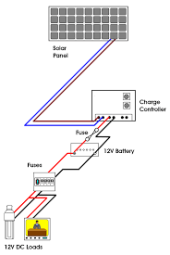JEL Flats TX
New Member
Hello, I am very new to all this. So, I currently have a system monitoring a trap. One 100watt solar panel, controller, and battery. I am using an Eco Worthy 30 amp controller. I have a wifi hot spot that connects vis USB port on the controller and an infrared light 12v. My controller only has one place to connect the light. I want to connect two lights without having to splice wires together. I would like to be able to connect other 12v lights to the controller. Is there a controller that allows for more than one device to be connected to it?
again I am very new and got all of my equipment from Amazon so I am not even sure exactly what is out there.
again I am very new and got all of my equipment from Amazon so I am not even sure exactly what is out there.



